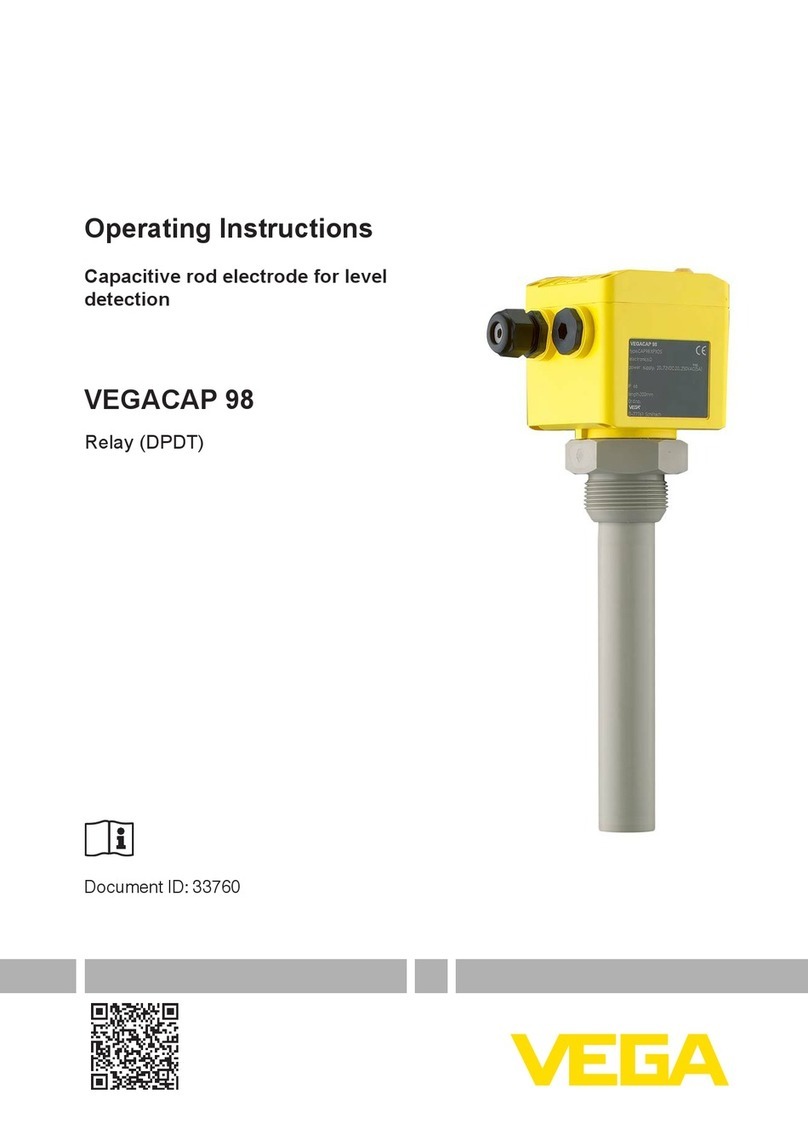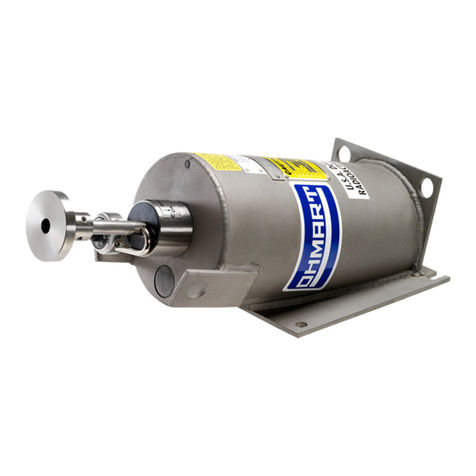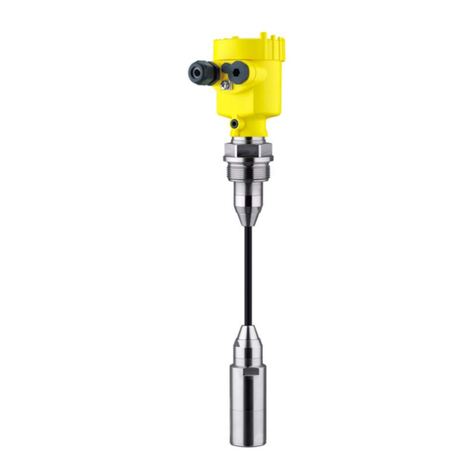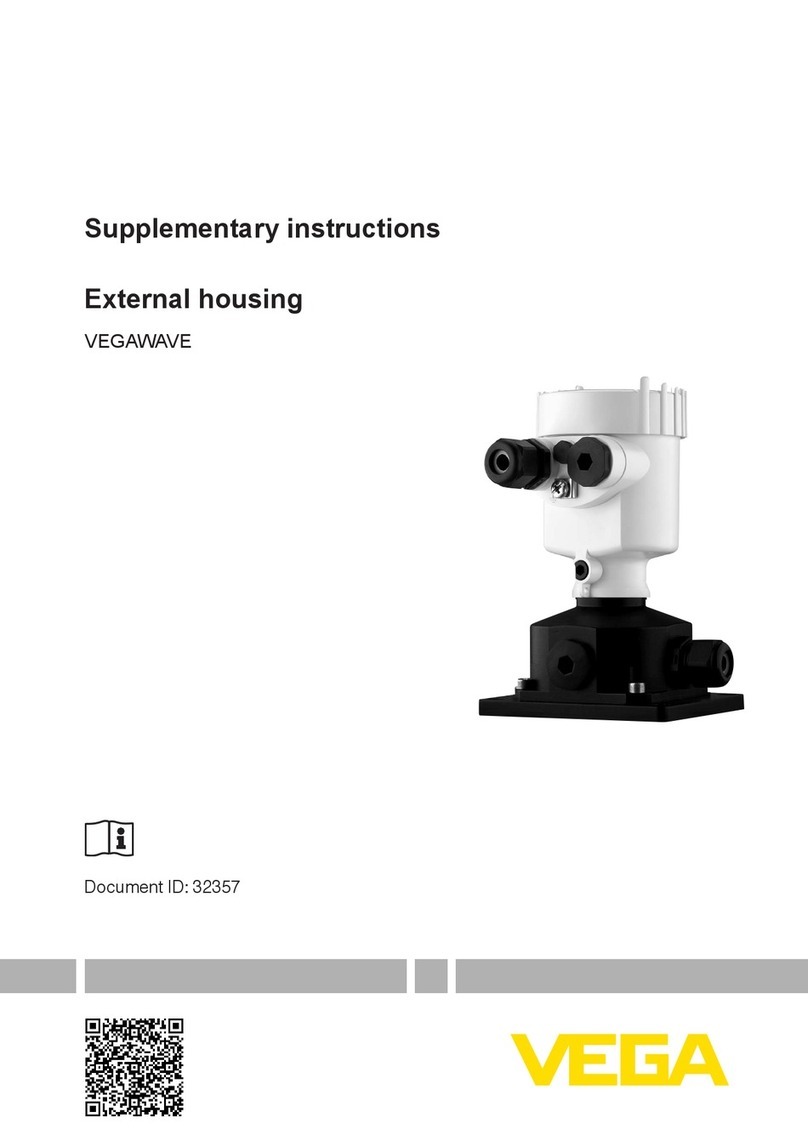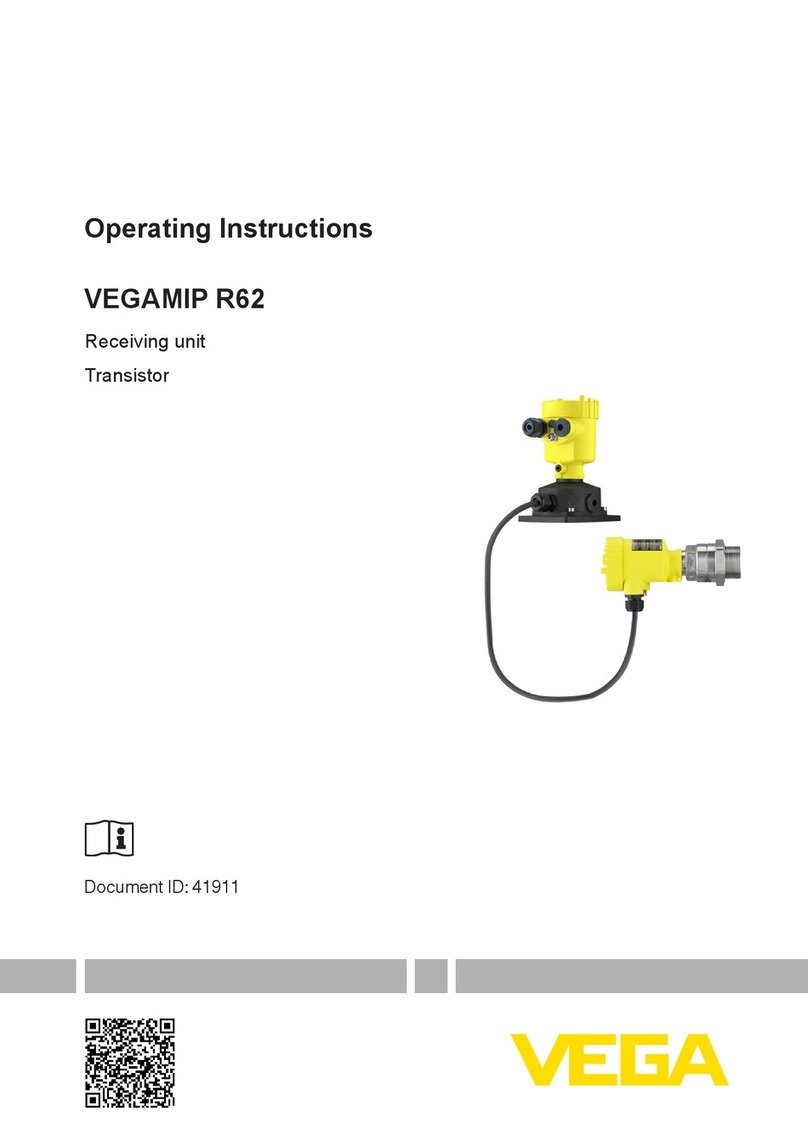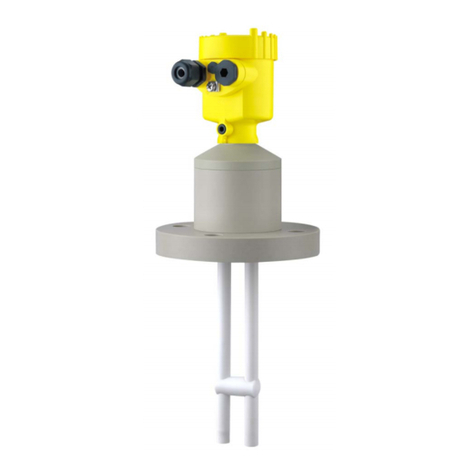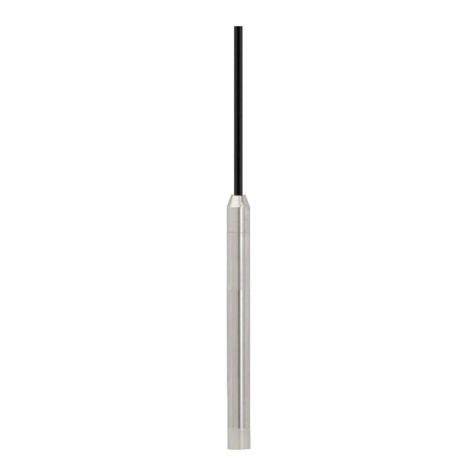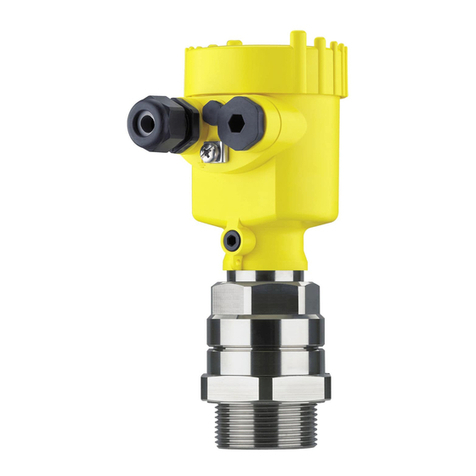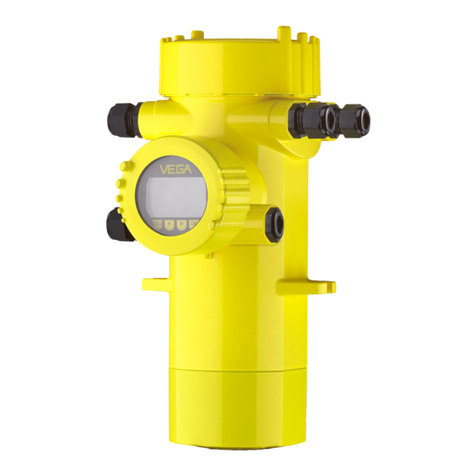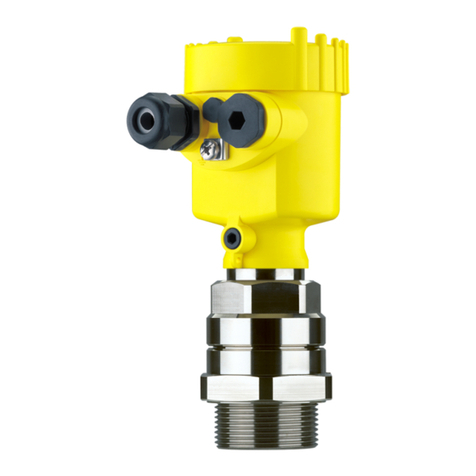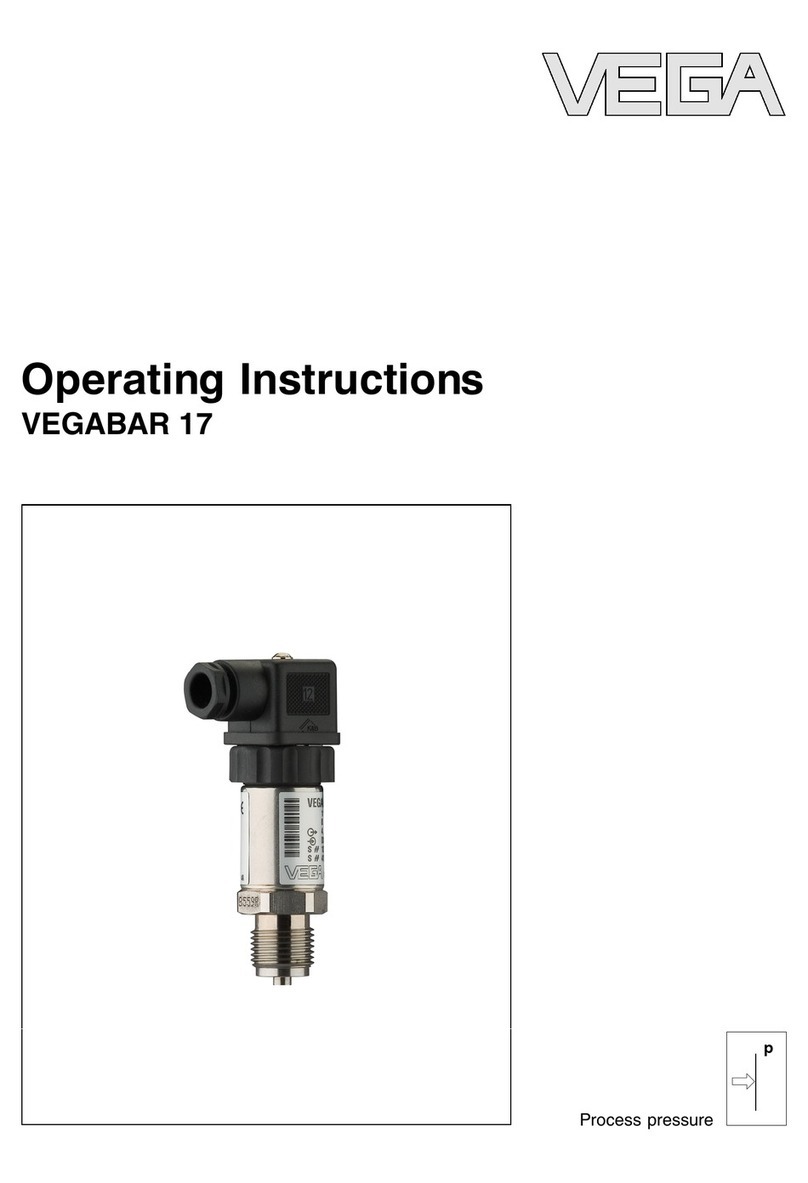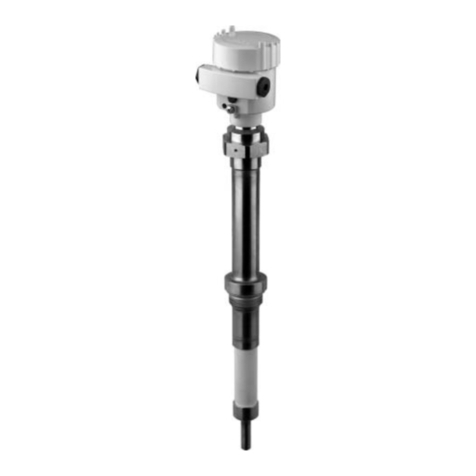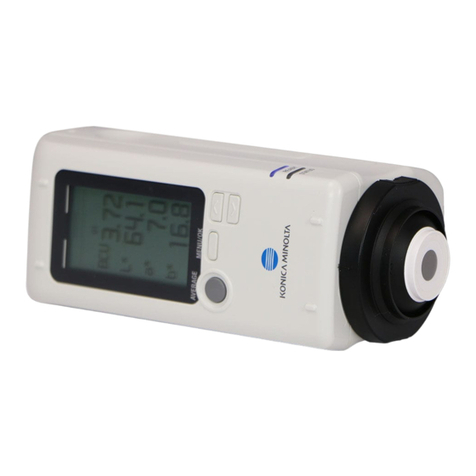
10 VEGADIS 371 Ex
With the rotating switch (16 steps) you choose the
appropriate function.
0 - OPERATE = Indication of meas. value
1 = Pump changeover function Relay 1 on/off
2 = Operating time indication Rel 1
3 = Pump changeover function Relay 2 on/off
4 = Operating time indication Rel 2
5 = Pump changeover function Relay 3 on/off
6 = Operating time indication Rel 3
7 = Pump changeover function Relay 4 on/off
8 = Operating time indication Rel 4
9 = ---- (not coordinated)
A = ---- (not coordinated)
B = ---- (not coordinated)
C = ---- (not coordinated)
D = ---- (not coordinated)
E = ---- (not coordinated)
F = ---- (not coordinated)
Plus/Minus keys (3 and 4)
With these keys you modify the value of the digital
indication. When you keep the key pushed, the digital
indication changes its value with raising speed.
Slide switch (1)
With the slide switch on the rear of the instrument you
can changeover between voltage measurement, active
sensor input and passive sensor input.
Ia- Active operation: The sensor is powered by
VEGADIS 371. Sensors connected in this
configuration are called passive sensors.
VEGADIS 371 reacts like a current source.
Ip- Passive operation: VEGADIS 371 is connected to
the sensor line (current input 4 … 20 mA). Sen-
sors connected in this configuration are called
active sensors. VEGADIS 371 reacts like a
current sink.
U - VEGADIS measures the voltage 0 … 10 V
Note
The position of the switch changes also the application
conditions for Ex-instruments (VEGADIS 371 Ex).
Also note the type approval or the conformity
certificate of VEGADIS 371 Ex.
Rotating switch (7)
Stage 1
In menu stage 1 you find all necessary functions which
are necessary for adjustment of the indicating
instrument. When you are in menu stage 1, the
"VEGA“-logo is shown non-flashing.
Note
When you want to activate the pump changeover
function, all relay outputs you want to coordinate to the
pump changeover function must have the same
function. When relay 1 e.g. switches on when the
adjusted max. value is reached, all following relays
must have the same adjustment.
0 - OPERATE = Indication measured value
1 - Relay 1 on = Relay 1 on
2 - Relay 1 off = Relay 1 off
3 - Relay 2 on = Relay 2 on
4 - Relay 2 off = Relay 2 off
5 - Relay 3 on = Relay 3 on
6 - Relay 3 off = Relay 3 off
7 - Relay 4 on = Relay 4 on
8 - Relay 4 off = Relay 4 off
9-t
i= Integration time
A - Out 0 … 20 mA,
Out 4 … 20 mA = Current output
B - Display min = Scaled indication at 0 %
C - Display max = Scaled indication at 100 %
D - Decimal point = Decimal point
E - Offset correction = Offset correction
F - Simulation = Simulation
Stage 2
In menu stage 2 you find the functions which are
necessary for adjustment of the pump changeover
function.
In rotating switch position 0 (Operate) you have to
push the plus and minus key together for approx. 3
seconds to change to menu stage 2 (pump
changeover function). When you are in menu stage 2,
the "VEGA“-logo flashes on the display. Push again
both keys to return to menu stage 1. After approx. 10
minutes the indication changes automatically to menu
stage 1.
Set-up


